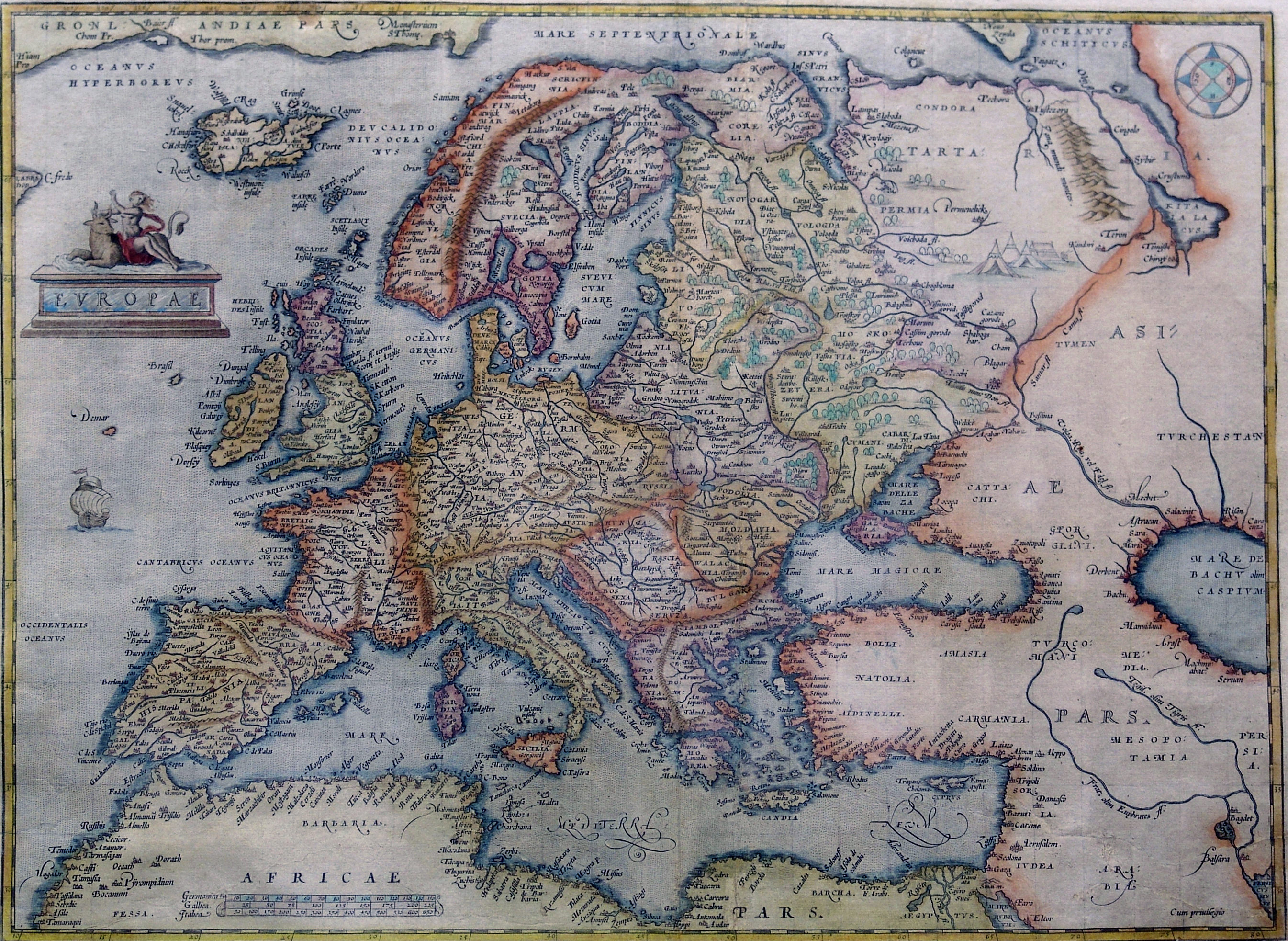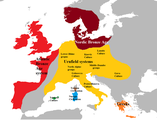
History of Europe
The history of Europe is traditionally divided into four time periods: prehistoric Europe (prior to about 800 BC), classical antiquity (800 BC to AD 500), the Middle Ages (AD 500–1500), and the modern era (since AD 1500).
The first early European modern humans appear in the fossil record about 48,000 years ago, during the Paleolithic era. Settled agriculture marked the Neolithic era, which spread slowly across Europe from southeast to the north and west. The later Neolithic period saw the introduction of early metallurgy and the use of copper-based tools and weapons, and the building of megalithic structures, as exemplified by Stonehenge. During the Indo-European migrations, Europe saw migrations from the east and southeast. The period known as classical antiquity began with the emergence of the city-states of ancient Greece. Later, the Roman Empire came to dominate the entire Mediterranean Basin. The Migration Period of the Germanic people began in the late 4th century AD and made gradual incursions into various parts of the Roman Empire.
The fall of the Western Roman Empire in AD 476 traditionally marks the start of the Middle Ages. While the Eastern Roman Empire would continue for another 1000 years, the former lands of the Western Empire would be fragmented into a number of different states. At the same time, the early Slavs began to become established as a distinct group in the central and eastern parts of Europe. The first great empire of the Middle Ages was the Frankish Empire of Charlemagne, while the Islamic conquest of Iberia established Al-Andalus. The Viking Age saw a second great migration of Norse peoples. Attempts to retake the Levant from the Muslim states that occupied it made the High Middle Ages the age of the Crusades, while the political system of feudalism came to its height. The Late Middle Ages were marked by large population declines, as Europe was threatened by the bubonic plague, as well as invasions by the Mongol peoples from the Eurasian Steppe. At the end of the Middle Ages, there was a transitional period, known as the Renaissance.
Early Modern Europe is usually dated to the end of the 15th century. Technological changes such as gunpowder and the printing press changed how warfare was conducted and how knowledge was preserved and disseminated. The Reformation saw the fragmentation of religious thought, leading to religious wars. The Age of Exploration led to colonization, and the exploitation of the people and resources of colonies brought resources and wealth to Western Europe. After 1800, the Industrial Revolution brought capital accumulation and rapid urbanization to Western Europe, while several countries transitioned away from absolutist rule to parliamentary regimes. The Age of Revolution saw long-established political systems upset and turned over. In the 20th century, World War I led to a remaking of the map of Europe as the large empires were broken up into nation-states. Lingering political issues would lead to World War II, during which Nazi Germany perpetrated The Holocaust. The subsequent Cold War saw Europe divided by the Iron Curtain into capitalist and communist states, many of them members of NATO and the Warsaw Pact, respectively. The West's remaining colonial empires were dismantled. The last decades saw the fall of remaining dictatorships in Western Europe and a gradual political integration, which led to the European Community, later the European Union. After the Revolutions of 1989, all European communist states transitioned to capitalism. The 21st century began with most of them gradually joining the EU. In parallel, Europe suffered from the the Great Recession and its after-effects, the European migrant crisis, and the Russian invasion of Ukraine.



